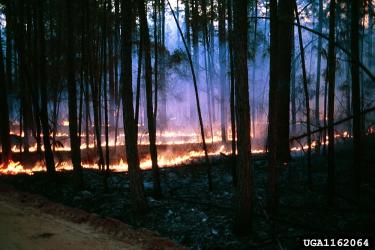What is the fire regime for your woods?
Your Woodland Fire Regime
Getting to know the natural fire regime of your woodland will help you support forest health while increasing wildfire resilience. Because fire is so central to woodland ecology, everything from trees and understory flowers to birds, mammals and amphibians will benefit from management plans informed by the local fire regime.
What is a fire regime?
Every element of your woodland evolved in the presence of fire–from the smallest insect to the largest tree and everything in between. But historically fire visited some locations more often, and with more severity, than others. This variation in frequency and severity is called the fire regime of a particular location, and it forms a foundational role in the nature of every woodland. Fire regimes that burn very rarely but at high intensity–killing all the plants in their path–produce a very different kind of forest than fire regimes that burn often but harmlessly through the forest floor, consuming only needles and grass.
A basic understanding of your woodland’s fire regime can be based on fire’s historical frequency and severity. But many more detailed aspects of a regime can be considered, such as:
- How does the fire behave? When, where and how does it burn?
- What are the conditions under which the fire burns? What are the fuel characteristics, weather, and causes?
- What are the specific effects of the fire? How much vegetation and what type is burned? Is there tree scorch or mortality and does it damage the soil?
How can I get more tips?
It’s simple! Enter your email below.

